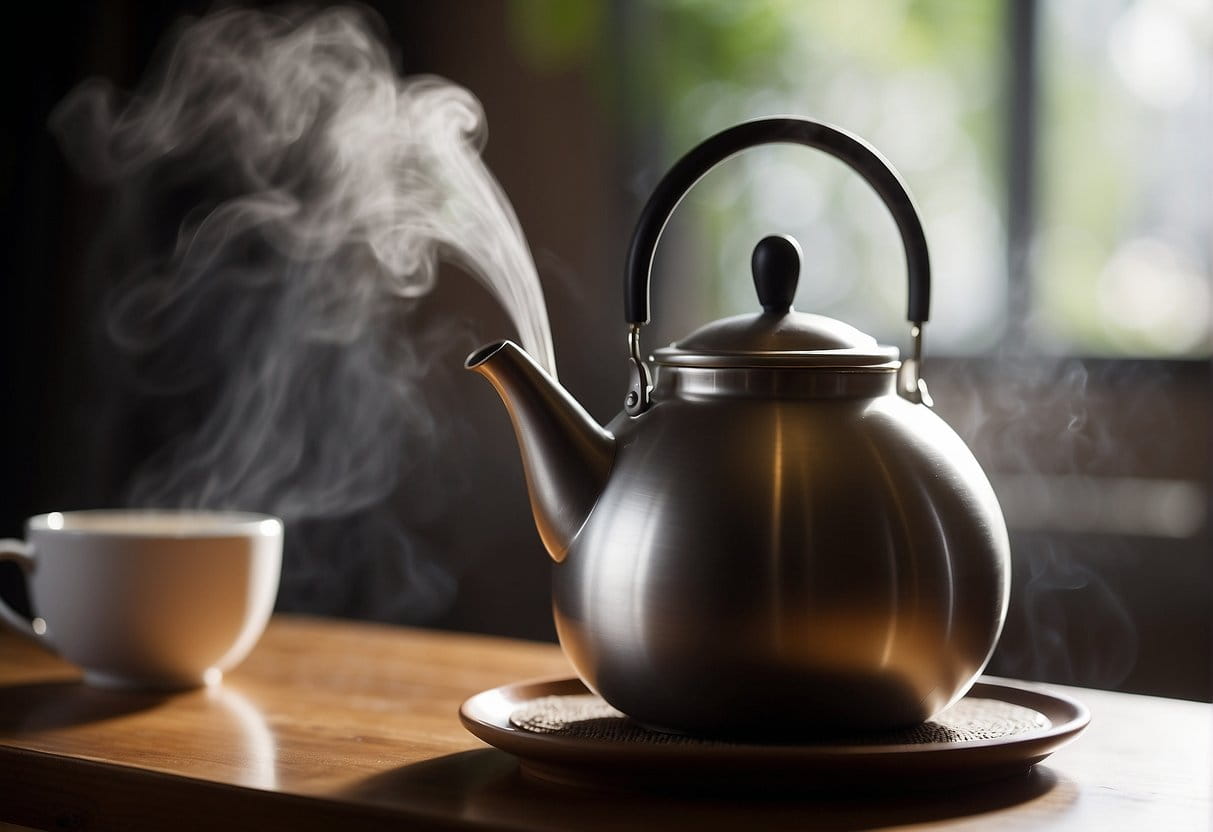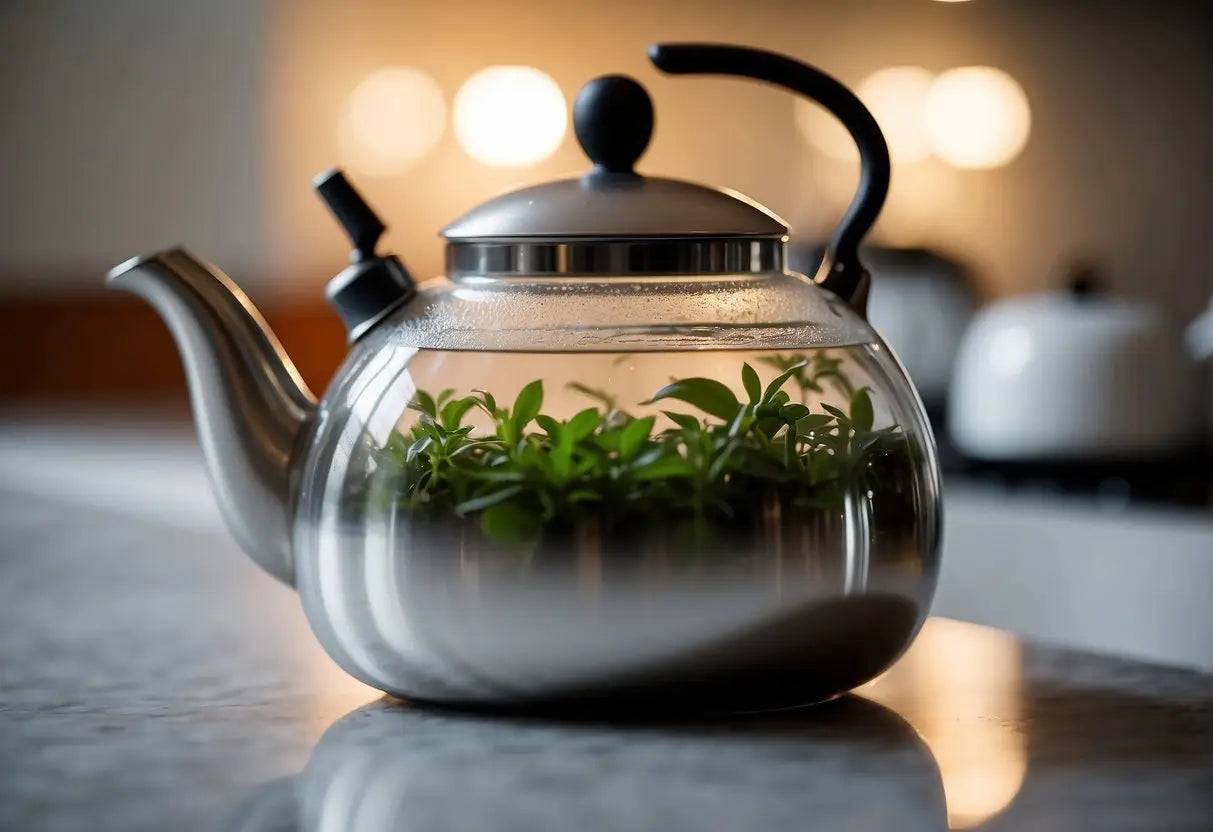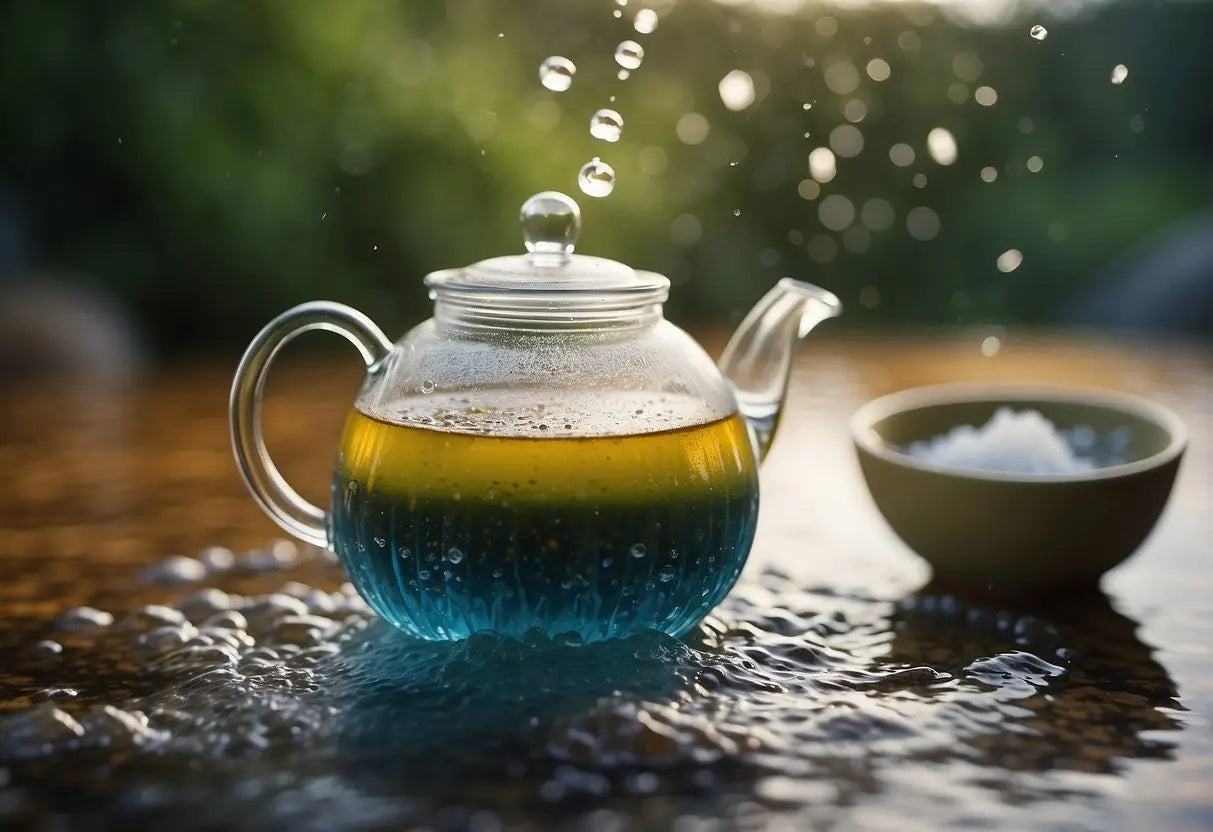How to Use a Teapot
When using a tea pot, it's vital to know the types available and their respective uses. Traditional tea pots come in various materials like ceramic, glass, cast iron, and stainless steel. Each material impacts the heat retention and flavor.
Ceramic Tea Pots:
- Heat retention: Excellent
- Flavor impact: Minimal
Bestsellers
- Heat retention: Moderate
- Visual appeal: High; watch tea leaves unfold
Cast Iron Tea Pots:
- Heat retention: Superior
- Flavor impact: Can add a mineral aspect to flavor
Stainless Steel Tea Pots:
- Heat retention: Good
- Durability: Very high
Your tea pot's size is another crucial aspect. Typically, sizes range from single servings (12 ounces) to larger gatherings (42 ounces or more). Choose based on your typical need.
- Single Serving: 12–15 ounces
- Small Group: 18–24 ounces
- Large Group: 32–42 ounces
The spout design affects pouring, while the handle placement affects how you hold the tea pot when serving. Ensure the lid fits snugly to prevent heat loss and spillage. Additionally, some tea pots come with built-in strainers, while others require a separate tea infuser to steep loose leaf teas.
Always follow the manufacturer's instructions for use and care to maintain the tea pot's condition and ensure safety during brewing. Preheating the pot with hot water can enhance tea flavor and temperature consistency. Gradually increase water temperature based on the type of tea: delicate teas like whites and greens fare better with cooler water, while robust blacks and herbals can tolerate boiling water.
Remember, the right tea pot can enhance your tea drinking experience, so choose one that suits your needs and preferences.
Types of Tea Pots

When selecting a tea pot, consider the material, as it can affect the heat retention and flavor of your tea.
Ceramic Tea Pots
Ceramic tea pots are excellent insulators, keeping your tea hot for an extended period. They come in a variety of glazes and designs, offering both aesthetics and functionality.
Glass Tea Pots
Glass tea pots let you enjoy the visual beauty of steeping tea. They are non-reactive, meaning they won't alter the tea's flavor, but they may not retain heat as well as other materials.
Cast Iron Tea Pots
These tea pots are incredibly durable and excel in heat retention. Cast iron tea pots also distribute heat evenly, enhancing the steeping process and tea taste.
Stainless Steel Tea Pots
Stainless steel tea pots are modern, sleek, and resistant to rust and staining. They're also proficient at retaining heat, and their durability makes them ideal for frequent use.
Lao Ban Zhang
Preparation Before Use

When using a tea pot for the first time, it's important to prepare it properly to ensure your tea tastes great and the tea pot performs well.
Clean Your Tea Pot:
First, clean your tea pot with warm soapy water. Rinse it thoroughly to remove any soap residue, then let it air-dry or dry it with a clean towel.
Season the Tea Pot (if necessary):
Some tea pots, like those made of clay or cast iron, benefit from seasoning. Brew a pot of strong tea, using tea leaves of your choice, and let it sit in the tea pot for a few hours. After discarding the tea, rinse the tea pot with hot water.
| Material | Seasoning Required | Initial Cleaning |
|---|---|---|
| Glass | No | Warm soapy water, rinse |
| Porcelain | No | Warm soapy water, rinse |
| Clay | Yes | Brew strong tea, rinse |
| Cast Iron | Yes | Brew strong tea, rinse |
| Stainless Steel | No | Warm soapy water, rinse |
Inspection:
Check for any manufacturer's stickers or labels and remove them. Inspect the spout and lid to ensure they're clear of obstructions and fit securely.
Preheating Your Tea Pot:
Before brewing, fill your teapot with hot water to preheat it. This helps maintain the temperature while steeping the tea. Pour out the water just before adding your tea leaves and fresh, boiling water.
By following these steps, you'll enhance your tea-drinking experience and prolong the life of your tea pot.
Boiling Water Safely

When you're ready to prepare tea, boiling water safely is a fundamental step. Ensure your tea leads to a comforting experience by following these straightforward guidelines:
Choose the Right Teapot:
Select a teapot designed for stove-top use if you’re planning to boil water directly in it. Check if it’s made from materials like stainless steel, cast iron, or borosilicate glass, which can withstand high temperatures.
Filling the Teapot:
- Do not overfill; leave some space at the top of the teapot to allow boiling water to move and steam to escape.
- Do use cold, fresh water to fill the teapot as it contains more oxygen, which can enhance the taste of your tea.
Heating Up the Water:
- Place your teapot on the stove and turn the heat to a medium-high setting.
- If your teapot comes with a whistle or a indicator, listen out for it as it signals that the water is boiling.
Safety Measures:
- Always stay in the kitchen while the water is heating to avoid accidents.
- Use oven mitts or a thick cloth when touching the teapot as it becomes very hot.
- Never allow the water to boil dry, as it can damage the teapot and become a fire hazard.
Pouring the Boiled Water: Pour the water from the teapot into your teacup or teapot slowly to prevent spilling or splashing, which can cause burns. Maintain a firm grip on the handle and use your other hand to support the teapot if necessary.
Steeping the Tea
Steeping tea is a crucial process that greatly impacts the flavor and quality of your drink. Proper technique involves selecting appropriate leaves, timing, and water temperature.
Choosing the Right Tea Leaves
When selecting tea leaves, consider the type of tea you desire. Black, green, oolong, or herbal teas each have unique flavors and properties. Black teas are robust and fully oxidized, green teas are delicate with minimal oxidation, oolong teas are partially oxidized, and herbal teas are not true teas but infusions of other plants.
- For strong flavors: Choose full-bodied black teas like Assam or Earl Grey.
- For lighter, subtle flavors: Opt for green teas like Sencha or Matcha.
- For a balance: Select oolong teas such as Tieguanyin or Da Hong Pao.
Determining Steeping Time
Steeping time affects the intensity of both flavor and caffeine content. Below is a table with general guidelines:
| Tea Type | Steeping Time |
|---|---|
| Black Tea | 3-5 minutes |
| Green Tea | 2-3 minutes |
| Oolong Tea | 3-5 minutes |
| Herbal Tea | 5-7 minutes |
Shorter steep times result in lighter, less bitter teas, while longer steep times can enhance complexity but risk bitterness.
Water Temperature Control
Different teas require different water temperatures as listed below:
- Black, Herbal: Boiling (212°F/100°C)
- Oolong: Just below boiling (190°F-200°F/87°C-93°C)
- Green: Well below boiling (150°F-180°F/65°C-82°C)
For precise temperatures, use a thermometer. Aim to heat your water to the desired temperature range based on your chosen tea:
- Boil water and let it cool for a few minutes for oolong or delicate black teas.
- For green teas, heat until steam begins to rise consistently from the kettle but before boiling.
It's essential to avoid pouring boiling water over green teas, as this can scald the leaves and alter the intended flavors.
Serving Tea
When your tea is properly steeped and ready, it's time to serve it. Ensure your teapot and cups are pre-warmed by rinsing them with hot water. This helps maintain the temperature of the tea.
Pouring the Tea:
- Lift the teapot with your dominant hand.
- Hold a strainer over the cup with your other hand if your teapot doesn't have one built-in.
- Pour the tea carefully into each cup, starting with those closest to you.
Adding Extras:
Provide your guests with options to customize their tea experience.
- Sugar, honey, or sweetener
- Milk or a milk substitute
- Lemon slices
- Fresh mint leaves
Organize these items on a tray or in small bowls, and pass them around after everyone has been served.
Temperature:
| Type of Tea | Ideal Serving Temperature |
|---|---|
| Black | 90–96°C (194–205°F) |
| Green | 70–80°C (158–176°F) |
| Herbal | 96°C (205°F) |
Cup Handling:
- Hold the cup by the handle.
- Sip slowly to appreciate the full flavor of the tea.
Remember to refill cups as they empty, and to handle the teapot and cups with care to avoid spills. Enjoy the company and your perfectly served tea.
Cleaning the Tea Pot

To maintain the quality and life span of your tea pot, follow these cleaning steps after each use:
1. Empty the Tea Pot:
- Discard any leftover tea and tea leaves from the pot.
2. Rinse with Warm Water:
- Fill the pot with warm water.
- Swirl the water around to loosen any residue.
- Pour out the water.
3. Clean with Mild Detergent:
- Use a small amount of dish soap.
- Employ a soft sponge or cloth to gently cleanse the interior.
- Avoid abrasive materials that can scratch the surface.
4. Rinse Thoroughly:
- Ensure all soap is properly rinsed out.
- Run warm water through the pot several times.
5. Dry the Tea Pot:
- Turn the pot upside down to drain excess water.
- Wipe the exterior and interior with a soft, dry towel.
6. Descale as Needed:
- If you notice scale buildup, fill the pot with a mixture of half water and half vinegar.
- Bring to a boil and allow it to stand for an hour, then rinse well.
7. Store Properly:
- Ensure the teapot is completely dry before storing.
- Keep it in a dry place to avoid mold or mildew.
Remember, never use steel wool or harsh chemicals that could damage the teapot. Regular cleaning after each use will ensure your tea pot continues to serve delightful cups of tea.
Tea Pot Maintenance
Proper maintenance is crucial to extend the life of your teapot and ensure the quality of your tea. Follow these guidelines to care for your teapot effectively.
Cleaning After Use
- Rinse your teapot with hot water after each use to remove tea residue.
- Wash with mild detergent if necessary, using a soft sponge or cloth.
- Avoid abrasive materials that can scratch the surface.
Note: For cast iron teapots, avoid using detergent unless necessary.
Regular Care
- Dry thoroughly before storing to prevent mold and odors.
- Inspect for chips or cracks that can harbor bacteria.
Lime Scale Build-Up
-
Check for lime scale deposits, especially if you have hard water.
Solution Instructions White Vinegar Fill the pot with a mixture of half vinegar and half water. Let sit for an hour, then rinse. Baking Soda Make a paste with water, apply to the affected areas, let sit for a few minutes, then rinse. -
Rinse thoroughly after descaling to remove any residue.
Storing Your Teapot
- Place in a dry, cool cupboard away from strong odors.
- Keep the lid off or ajar to allow air circulation.
Adhering to these maintenance practices will keep your teapot in optimal condition for your next tea brewing experience.
Frequently Asked Questions
In this section, you’ll find specific guidance to address common inquiries related to using a teapot effectively, including various brewing techniques and equipment care.
What is the correct method for brewing tea with an infuser in a teapot?
To brew tea using an infuser in a teapot, first, fill the infuser with the desired amount of tea leaves. Heat water to the recommended temperature for the type of tea you're using. Pour the water into the teapot and allow the tea to steep for the suggested duration before removing the infuser.
Is it possible to place a ceramic teapot directly on the stove for heating?
A ceramic teapot should not be placed directly on the stove as it can crack due to uneven heating. Instead, heat the water in a separate kettle and then pour it into the teapot.
How do you prepare tea using tea bags in a teapot?
To prepare tea using tea bags in a teapot, place one tea bag per cup of tea directly into the pot. Pour hot water over the tea bags and let them steep for the amount of time recommended for the type of tea. Remove the tea bags after steeping to avoid over-brewing.
What are the steps for making tea with a teapot and loose leaves?
Making tea with loose leaves involves a few steps: warm the teapot with some hot water and discard, then add one teaspoon of loose tea per cup into the pot. Pour hot water over the tea leaves and allow them to steep for the precise time suitable for the tea variety. After steeping, pour through a strainer to catch any leaves.
Should the tea bags remain in the teapot during the steeping process?
Tea bags can remain in the teapot during the steeping process, but they should be removed once the tea has steeped for the recommended time to prevent a bitter flavor.
What are the general guidelines for using a Japanese teapot?
When using a Japanese teapot, use lower water temperatures for green teas, often around 175°F. Measure the tea leaves with the scoop provided, typically one scoop per person. Pour the water into the pot and steep for just a minute or two. Pour out every last drop as Japanese teapots are designed to retain no water, ensuring a perfect brew every time.
← Older post Newer post →











